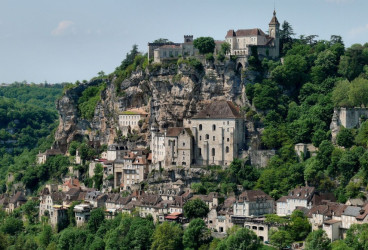Palestinians traveling in Jerusalem must obtain a permit from the Israeli authorities in order to enter the city. This permit is usually obtained through the Palestinian Authority. Palestinians must also be aware of the restrictions on movement within the city, as certain areas are off-limits to Palestinians. Additionally, Palestinians should be aware of the security situation in Jerusalem, as there is a heightened risk of violence in the city.
The city of Jerusalem is a major source of conflict between Israelis and Palestinians. Both sides claim a right to the city, and Israeli control of the city has led to numerous disputes between the two sides, both historically and in the present day. The most recent of these disputes is the status of East Jerusalem, which was annexed by Israel in 1967. Palestinians consider East Jerusalem to be the occupied capital of a potential Palestinian state, while Israeli views it as part of its unified capital, alongside West Jerusalem.
Palestinians also continue to struggle for the right to return to properties they once owned in pre-1967 Jerusalem.
Top 10 Best Tourist Attractions to Visit in Jerusalem, Palestinians:
Help plan your city sightseeing with our list of the top tourist attractions and things to do in Jerusalem, Palestinians!
01. Western Wall:
The Western Wall, also known as the Wailing Wall or Kotel, is an ancient limestone retaining wall in Jerusalem that stands at the foot of the western side of the Temple Mount. It is the most sacred site in Judaism outside of the Temple Mount itself, and is a major pilgrimage site for Jews from around the world.

The wall is believed to date back to the time of King Herod and is an important site for Jewish prayer and traditional practice. Many Jewish people have left prayers written on pieces of paper and lodged them in the crevices of the wall.
02. Israel Museum:
The Israel Museum is a world-renowned arts and culture center located in Jerusalem. The museum comprises of 30 galleries, showcasing Jewish, Hebrew and contemporary Israeli art. Some of the museum’s highlights include Israel’s largest archaeological collection, ancient artifacts like the Dead Sea Scrolls, sculptures and a collection of paintings, photographs and objets d’art.

The museum is also home to the Shrine of the Book, which houses some of the most famous Dead Sea Scrolls in the world. The museum also offers temporary exhibitions, lectures and workshops in a variety of disciplines. Visitors can explore the museum’s permanent galleries, shop at the museum store and dine at the on-site restaurant.
The museum also has a library, an auditorium and an outdoor sculpture garden. Guided tours are available, and the museum is open to all.
03. Church of the Holy Sepulchre:
The Church of the Holy Sepulchre is a church located in Jerusalem's Old City, which is said to be the site of the crucifixion, burial and resurrection of Jesus Christ. The church has been an important pilgrimage site for Christians around the world since at least the fourth century.

The church has been under the care of various Christian denominations over the centuries and is currently jointly managed by the Greek Orthodox, Roman Catholic, and Armenian Apostolic churches. The Church of the Holy Sepulchre is considered one of the holiest sites in Christianity today.
04. Yad Vashem:
Yad Vashem is the Holocaust Martyrs' and Heroes' Remembrance Authority, located in Jerusalem, Israel. It is dedicated to preserving the memory of those who perished in the Holocaust, as well as the stories of those who survived and the brave individuals who risked their lives to save others.

Yad Vashem strives to educate new generations about the horrors of the Holocaust and arms them with tools to combat antisemitism, racism and xenophobia. Yad Vashem also seeks to facilitate research on the Holocaust and to provide a safe haven to remember, reflect, seek solace, and gain insight into its past.
The institution is involved with many forms of Holocaust remembrance, including a comprehensive archives and museum, research, memorial sites and educational programs.
05. Temple Mount:
Temple Mount, known to Muslims as the Noble Sanctuary, is a set of elevated plateaus located in the Old City of Jerusalem. It is venerated by Jews, Christians and Muslims alike for its role in religious history and its sprawling complex of holy sites. It is also the holiest site in Judaism.

The Western Wall, which is part of the westernmost retaining wall of the Temple Mount, is the holiest site in Judaism. The Temple Mount is also home to two Muslim holy sites, the Dome of the Rock and the al-Aqsa Mosque.
06. Western Wall Tunnels:
The Western Wall Tunnels, located in Jerusalem, Israel, are an intricate network of underground tunnels that run along the western side of the Temple Mount, the holiest site in Judaism. The tunnel system extends for over 500 meters and offers a unique way for visitors to explore the ancient history of this important site. Visitors to the tunnels have access to the Western Wall, the last remaining part of the Second Temple, as well as various artifacts and remains of the Second Temple period.

This archaeological site is managed by the Western Wall Heritage Foundation and is open to the public in order to preserve and educate the public on the history of the Temple Mount and its importance to the Jewish people.
07. The Garden Tomb:
The Garden Tomb is a rock-cut tomb in Jerusalem that is said to be the site of Jesus's burial and his resurrection. The Garden Tomb is located just outside the Old City walls, near the Damascus Gate and Damascus Street. According to tradition, the Garden Tomb is believed to be the location where Jesus was laid in the tomb after his crucifixion and the place where he rose from the dead.

The Garden Tomb is managed by the Garden Tomb Association, which is a Christian charity that aims to promote the historical and spiritual significance of the site among people of all faiths and nationalities. The Garden Tomb is open to the public, who come to pray, reflect, and remember.
08. City of David:
The City of David is an ancient walled city located just south of the Old City of Jerusalem and is considered to be the original urban core of the city of Jerusalem. It is also known as the City of Jerusalem or the biblical City of Zion. The City of David is primitively mentioned in the Bible and is now an archeological site that includes findings from the Middle Bronze Age, through the Iron Age and up to the end of the Ottoman period. Some of the artifacts from its many periods of occupation can be found in the Israel Museum and elsewhere.

The City of David is home to many archaeological sites, such as the remnants of the ancient Jerusalem city walls, the southern section of the Hasmonean aqueduct, the King's Garden and Warren's Shaft. It is also the location of the biblical Pool of Siloam and the archaeological remains of the ancient walls of Jerusalem. The City of David is a popular tourist attraction in Jerusalem.
09. Tower of David:
The Tower of David is an ancient citadel located in the Old City of Jerusalem. It is also known as the Jerusalem Citadel. The Tower of David was built during the first century BC by King Herod the Great and it has been an important fortress for thousands of years.

The citadel has seen major construction projects throughout history, with modifications being made by a number of different rulers, including Caliph Umar, King Baldwin of Jerusalem, the Ottoman Empire, and the British Royal Engineers.
Today, the Tower of David Museum is located in the citadel and is open to the public, with many displays on the history of the citadel and city.
10. Dome of the Rock:
The Dome of the Rock is a distinctively Muslim holy site that is located on the Temple Mount in Jerusalem. It is the oldest extant Islamic monument and is the oldest surviving example of early Islamic architecture. The Dome of the Rock is not just an important Islamic site, but also a key pilgrimage site within Judaism and Christianity. The construction of the Dome of the Rock was completed by the Umayyad Caliph Abd al-Malik in 691 CE.

It is believed by some to be the site where Abraham almost sacrificed his son, Isaac, as mentioned in the Bible. The Dome of the Rock is an iconic symbol of Jerusalem and a powerful reminder of the city's importance to the three Abrahamic religions of Judaism, Christianity, and Islam.
Another's Top 20 Must-See Attractions in Jerusalem, Palestinians - Especially for First-Time Travelers!
- Old City of Jerusalem: explore the four quarters and visit sacred sites such as the Western Wall, the Temple Mount, and the Church of the Holy Sepulchre.
- The Western Wall Tunnel: Take a guided tour through this underground passage, which extends from the Western Wall plaza to the Temple Mount.
- Yad Vashem Holocaust Memorial: A must-visit for anyone who wants to gain a deeper understanding of the Holocaust.
- Mount of Olives: Home of the Tomb of the Virgin Mary and the Garden of Gethsemane.
- Mount Zion and the City of David: Some of Jerusalem’s most captivating historical sites and biblical sites.
- The Israel Museum: One of the world’s most important archaeological and Judaica collections.
- Church of the Nativity: The oldest Christian church in the world, built over the cave that tradition identifies as the birthplace of Jesus.
- Dead Sea: Relax and bathe in the salty sea or visit one of the nearby health spas.
- Western Wall Plaza: Visit the site of the former Temple Mount and the holiest Jewish site in the world.
- Dome of the Rock: Located on the Temple Mount, this Muslim holy site was built on the foundation stone of the First and Second Temples.
- Via Dolorosa: The route Jesus is said to have walked to his crucifixion.
- Bethlehem: Visit Jesus’ birthplace and explore nearby Manger Square and the Church of the Nativity.
- Jericho: See the oldest continuously inhabited city in the world and visit the nearby Mount of Temptation.
- Masada: Explore the magnificent fortress built by Herod the Great and take in the stunning view of the Dead Sea.
- Jewish Quarter: Explore the history and culture of Jerusalem’s Jewish community and visit the Hurva Synagogue.
- Garden Tomb: Possibly the site of Jesus’ burial, which includes a church and a garden.
- Tower of David: Climb to the top of Herod’s ancient fortress to see amazing views of the Old City.
- Garden of Gethsemane: A tranquil olive garden located at the foot of the Mount of Olives.
- Jaffa Gate: This fortified gate marks the entrance to Jerusalem’s Old City.
- Diaspora Museum: A captivating museum that explores the Jewish experience in the Diaspora from antiquity to the present.
Top 10 Travel Tips and Tricks: (When You will at There):
- Learn about the history of Jerusalem: Respect the city’s complicated past, in particular the Palestinian struggle for sovereignty.
- Bring respectful dress: Follow the appropriate dress code for every location you visit.
- Get informed: Before you travel to Jerusalem, it’s important to understand the current security situation.
- Take precautions: Be vigilant, especially if you encounter demonstrations, protests, or other heated situations.
- Respect the city’s religious sites: Understand and respect the sanctity of all of Jerusalem's religious sites.
- Consider a Palestinian guide: Learn more about the Palestinian struggle, customs, and culture as you travel.
- Support local businesses: Shop local, and get to know the locals and what they offer, including beautiful handcrafts.
- Respect cultural differences: Show respect for Palestinian customs, traditions and beliefs; ask permission before taking pictures or filming.
- Drink plenty of water: Hot climates can dehydrate quickly! Bring plenty of water when exploring and sightseeing.
- Document your trip: Collect memories and build awareness of the situation in Palestine by taking photos and writing down your experiences.
Where to Stay in Jerusalem, Palestinians for Sightseeing:
For visitors to Jerusalem looking to stay in the city as Palestinians, there are two main areas for accommodation worth considering. The first is East Jerusalem, which includes the Old City and is home to many of the monuments, religious sites, and restaurants that make Jerusalem a top tourist destination. There are a number of hostels, hotels, and apartments available here, or you might opt for a homestay for a more unique experience.
The second, and perhaps less explored, option is the Beit Hanina neighborhood. This area is situated just three kilometers north of Jerusalem and features a variety of Palestinian homes, restaurants, and markets. A number of vacation rentals are available here, or you could opt for a homestay with a local Palestinian family.
No matter where you choose to stay in Jerusalem as a Palestinian, remember to keep in mind all relevant tourist and cultural regulations to ensure a safe and respectful experience.
Top 10 Best Luxury Hotels in Jerusalem, Palestinians:
- Waldorf Astoria Jerusalem
- King David Jerusalem
- Inbal Jerusalem Hotel
- The American Colony Hotel
- Mamilla Hotel
- David Citadel Hotel
- Mamilla Rooftop Suites
- Montefiore Hotel
- Dan Boutique Jerusalem
- Crowne Plaza Jerusalem
Top 10 Best Budget Hotels in Jerusalem, Palestinians:
- Leonardo Plaza Hotel Jerusalem
- Dan Jerusalem
- Residence Inn Jerusalem
- Carlton Hotel Jerusalem
- Ramada Jerusalem
- Inbal Jerusalem Hotel
- David Citadel Hotel
- Mamilla Hotel
- Prima Park Hotel
- Jerusalem Gold Hotel












{{item.get_author.first_name}} {{item.get_author.last_name}}
Level 7
5 Photos
36 Reviews
{{item.comment_txt}}
{{item_reply.get_author.first_name}} {{item_reply.get_author.last_name}}
@ {{item_reply.reply_to}}, {{item_reply.reply_txt}}